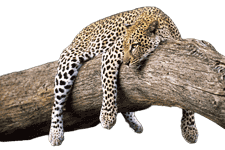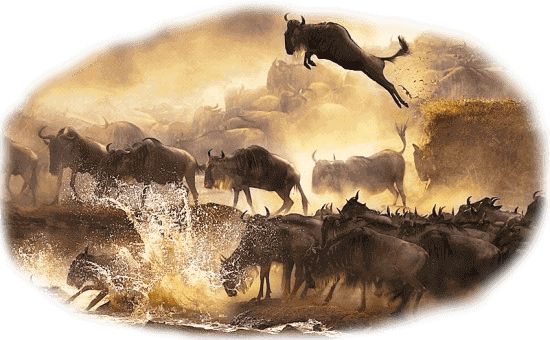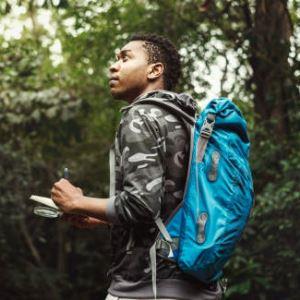 Kenya is one of Africa’s most thrilling and diverse travel destinations, offering Danish tourists a perfect blend of adventure, relaxation, and cultural discovery. From breathtaking safaris in the wild to sun-drenched beaches along the Indian Ocean and vibrant traditions that echo through generations, Kenya promises unforgettable experiences for every kind of traveler. For Danish tourists seeking the ultimate safari, Kenya’s national parks and reserves offer encounters with some of the world’s most iconic wildlife. The Maasai Mara is a must-visit, especially between July and October during the Great Migration, when millions of wildebeests and zebras thunder across the plains. Amboseli National Park provides stunning views of elephants roaming beneath the towering presence of Mount Kilimanjaro. For bird lovers, Lake Nakuru is a haven with its flocks of flamingos and rich biodiversity. Beyond the savannas, Kenya’s coastline presents a tropical escape that Danish tourists will love. Diani Beach is known for its powdery white sand and upscale resorts, ideal for both relaxation and water sports. Watamu and Malindi offer quieter, more intimate beach experiences, complete with coral reefs perfect for snorkeling and diving. On Lamu Island, visitors step into a historical world influenced by centuries of Swahili culture, where narrow alleyways, traditional dhows, and ancient architecture define the experience. Cultural experiences in Kenya add deep richness to the trip. Danish tourists can immerse themselves in authentic traditions by visiting a Maasai village and learning about their customs, crafts, and way of life. Culinary explorations are another highlight: trying local dishes such as nyama choma (grilled meat), sukuma wiki (collard greens), and ugali (maize porridge) offers a delicious introduction to Kenyan flavors. In cities like Nairobi, the culture turns contemporary with bustling markets, art galleries, and live music performances that reflect a modern African rhythm. Whether it’s tracking lions on safari, lounging by turquoise waters, or dancing to Afrobeat in Nairobi’s nightlife, Kenya is a destination that delivers on all fronts. Each experience offers Danish tourists a unique perspective of the country's natural beauty and cultural richness. The vast savannas are perfect for photography and game drives, while the coast invites lazy beach days and marine adventures like kitesurfing and scuba diving. Nairobi, Kenya's capital, serves as a hub of modern African life, blending innovation with tradition. Danish travelers will find a thriving urban scene filled with art collectives, local designers, and restaurants serving up both local and international cuisine. It's also a city with easy access to nature, thanks to the Nairobi National Park, where you can spot wildlife just minutes from the city center. For those who value responsible and immersive travel, Kenya excels. Many lodges and tour operators practice eco-friendly tourism and actively support local communities. Danish tourists can opt for guided experiences that promote conservation while providing educational encounters. From volunteering with wildlife programs to participating in community-based tourism initiatives, the options are meaningful and impactful. Kenya’s blend of nature, culture, and hospitality makes it a travel destination that exceeds expectations. Whether you're a first-time visitor or returning for more, Danish tourists will find Kenya to be a deeply enriching and unforgettable journey that stays with you long after the trip ends.
Kenya is one of Africa’s most thrilling and diverse travel destinations, offering Danish tourists a perfect blend of adventure, relaxation, and cultural discovery. From breathtaking safaris in the wild to sun-drenched beaches along the Indian Ocean and vibrant traditions that echo through generations, Kenya promises unforgettable experiences for every kind of traveler. For Danish tourists seeking the ultimate safari, Kenya’s national parks and reserves offer encounters with some of the world’s most iconic wildlife. The Maasai Mara is a must-visit, especially between July and October during the Great Migration, when millions of wildebeests and zebras thunder across the plains. Amboseli National Park provides stunning views of elephants roaming beneath the towering presence of Mount Kilimanjaro. For bird lovers, Lake Nakuru is a haven with its flocks of flamingos and rich biodiversity. Beyond the savannas, Kenya’s coastline presents a tropical escape that Danish tourists will love. Diani Beach is known for its powdery white sand and upscale resorts, ideal for both relaxation and water sports. Watamu and Malindi offer quieter, more intimate beach experiences, complete with coral reefs perfect for snorkeling and diving. On Lamu Island, visitors step into a historical world influenced by centuries of Swahili culture, where narrow alleyways, traditional dhows, and ancient architecture define the experience. Cultural experiences in Kenya add deep richness to the trip. Danish tourists can immerse themselves in authentic traditions by visiting a Maasai village and learning about their customs, crafts, and way of life. Culinary explorations are another highlight: trying local dishes such as nyama choma (grilled meat), sukuma wiki (collard greens), and ugali (maize porridge) offers a delicious introduction to Kenyan flavors. In cities like Nairobi, the culture turns contemporary with bustling markets, art galleries, and live music performances that reflect a modern African rhythm. Whether it’s tracking lions on safari, lounging by turquoise waters, or dancing to Afrobeat in Nairobi’s nightlife, Kenya is a destination that delivers on all fronts. Each experience offers Danish tourists a unique perspective of the country's natural beauty and cultural richness. The vast savannas are perfect for photography and game drives, while the coast invites lazy beach days and marine adventures like kitesurfing and scuba diving. Nairobi, Kenya's capital, serves as a hub of modern African life, blending innovation with tradition. Danish travelers will find a thriving urban scene filled with art collectives, local designers, and restaurants serving up both local and international cuisine. It's also a city with easy access to nature, thanks to the Nairobi National Park, where you can spot wildlife just minutes from the city center. For those who value responsible and immersive travel, Kenya excels. Many lodges and tour operators practice eco-friendly tourism and actively support local communities. Danish tourists can opt for guided experiences that promote conservation while providing educational encounters. From volunteering with wildlife programs to participating in community-based tourism initiatives, the options are meaningful and impactful. Kenya’s blend of nature, culture, and hospitality makes it a travel destination that exceeds expectations. Whether you're a first-time visitor or returning for more, Danish tourists will find Kenya to be a deeply enriching and unforgettable journey that stays with you long after the trip ends.
Best Travel Experiences in Kenya for Danish Visitors
| Experience Type | Destination | Best Time to Visit | Highlights |
|---|---|---|---|
| Safari Adventure | Maasai Mara | July to October | Great Migration, Big Five |
| Wildlife Viewing | Amboseli National Park | June to October | Elephants, Mt. Kilimanjaro views |
| Beach Relaxation | Diani Beach | December to March | White sands, luxury resorts |
| Cultural Immersion | Lamu Island | November (Dhow Festival) | Swahili architecture, sailing events |
| City & Art Culture | Nairobi | Year-round | Museums, markets, live music |
Top Kenya Safari Experiences for Danish Tourists
Kenya offers Danish tourists a safari experience like no other, blending dramatic landscapes, rich biodiversity, and unforgettable wildlife encounters. Whether you're a first-time visitor or a seasoned traveler, the variety and depth of Kenya's safari offerings promise something for everyone. The Maasai Mara National Reserve stands out as the crown jewel of Kenyan safaris. Known for its vast open plains and high concentration of wildlife, it's one of the best places in Africa to spot the Big Five: lions, elephants, buffalo, leopards, and rhinos. The spectacle of the Great Migration, which occurs from July to October, is an awe-inspiring natural event where millions of wildebeests and zebras cross the Mara River in search of greener pastures. Amboseli National Park is another must-see destination, particularly famous for its large herds of elephants and unbeatable views of Mount Kilimanjaro. Danish tourists who enjoy photography will find this park especially rewarding, with opportunities to capture wildlife silhouetted against Africa’s tallest mountain. For a change of scenery, head to Lake Nakuru National Park. This park is renowned for its flocks of pink flamingos and over 400 bird species, making it a paradise for birdwatchers. The park also supports populations of both white and black rhinos, and it’s smaller and more contained, which can be ideal for travelers with limited time. For a more off-the-beaten-track experience, Samburu National Reserve in northern Kenya introduces tourists to unique wildlife species such as the Grevy’s zebra, Somali ostrich, and gerenuk. The rugged terrain and rich Samburu culture add an extra layer of interest. Each of these parks offers guided game drives, many with experienced local guides who bring the savanna to life with stories and expert tracking skills. Danish tourists can choose from luxury lodges, tented camps, or eco-friendly accommodations that blend comfort with nature. With its diversity of landscapes and wildlife, Kenya is a safari destination that rewards curiosity and embraces sustainability. From the sprawling grasslands of the Maasai Mara to the rugged and remote beauty of Samburu, each ecosystem presents a unique and captivating environment for exploration. Danish travelers will find that Kenya's national parks and game reserves are not only about viewing animals but also about understanding the delicate balance between nature and conservation. What makes Kenya stand out for Danish tourists is its seamless combination of thrilling wildlife encounters with meaningful cultural immersion. Many safaris include visits to local communities, where travelers can learn about the traditions of the Maasai, Samburu, and other indigenous groups. These moments of connection add depth and context to the journey. Eco-tourism plays a crucial role in Kenya’s travel scene. Responsible travel practices are promoted through partnerships with local guides, sustainable lodges, and conservation programs that tourists can actively participate in. Whether it’s adopting a tree, supporting anti-poaching efforts, or staying at a carbon-neutral camp, Danish visitors are encouraged to make a positive impact. From epic migrations to personal cultural exchanges, Kenya offers Danish tourists a journey filled with adventure, education, and awe. Every step in this land is an opportunity to witness nature at its most powerful and humanity at its most connected.
Best Wildlife Safari Parks in Kenya for Danish Tourists to Visit
Kenya is a top-tier destination for wildlife lovers, and Danish tourists seeking a thrilling safari holiday will be spoiled for choice. With its iconic national parks, unique wildlife species, and expert-guided experiences, Kenya is perfect for both seasoned adventurers and first-time safari-goers. Here are the best wildlife safari parks for Danish tourists, each offering something distinct and unforgettable:
- Maasai Mara National Reserve: This is Kenya's most famous safari park, renowned for the Great Migration, where millions of wildebeests and zebras cross the Mara River between July and October. Danish tourists will find incredible photo opportunities of the Big Five and dramatic predator-prey interactions on open plains.
- Amboseli National Park: Located near the Tanzanian border, this park is known for its large elephant herds and striking views of Mount Kilimanjaro. The park's dusty plains and swamps provide contrasting backdrops for wildlife photography and unforgettable safari drives.
- Lake Nakuru National Park: A birdwatcher’s paradise, this park boasts massive flocks of flamingos and over 400 bird species. It’s also a sanctuary for endangered white and black rhinos, making it ideal for Danish visitors who want a compact, rich wildlife experience.
- Samburu National Reserve: A more remote option, Samburu offers unique species like Grevy’s zebra, Somali ostrich, and gerenuk. The semi-arid landscape and local Samburu culture provide a distinctive experience far from the mainstream safari trail.
Each of these parks features quality lodges, knowledgeable guides, and immersive safari experiences tailored to travelers seeking nature, photography, and conservation all in one package.
Kenya Beach Holiday Destinations Loved by Danish Tourists
Kenya’s Indian Ocean coastline is a tropical haven, ideal for Danish tourists in search of sun, sea, and culture. With its palm-fringed beaches, warm turquoise waters, and laid-back coastal towns, Kenya offers an unforgettable beach holiday that combines relaxation with cultural richness. Whether you're looking for luxurious seaside resorts, quiet retreats, or historical coastal charm, Kenya has something to offer every kind of beach lover. Diani Beach is perhaps the most famous coastal destination in Kenya. Located about 30 kilometers south of Mombasa, it boasts powdery white sands, crystal-clear waters, and lush palm groves. Danish tourists can enjoy a wide range of activities here, from kitesurfing and jet skiing to snorkeling and paddleboarding. The area is also home to upscale resorts and eco-lodges, making it ideal for both relaxation and adventure. For a quieter, more serene atmosphere, Watamu and Malindi are excellent options. Watamu is a small coastal town known for its coral reefs, marine parks, and turtle conservation projects. Danish travelers interested in eco-tourism and underwater exploration will find Watamu Marine National Park especially captivating. Malindi, just north of Watamu, offers a mix of Swahili and Italian culture, colonial architecture, and pristine beaches perfect for a laid-back holiday. Lamu Island, a UNESCO World Heritage Site, provides a completely different beach experience steeped in Swahili culture. There are no cars on the island, and transportation is by donkey or traditional dhow boats. Danish tourists can explore narrow alleyways, visit centuries-old mosques, and enjoy fresh seafood while soaking in the slow, enchanting rhythm of island life. Lamu is especially vibrant during the annual Lamu Cultural Festival or the Dhow Sailing Festival. In all these destinations, Danish tourists will also find excellent opportunities to connect with local communities, enjoy fresh coastal cuisine, and experience the welcoming hospitality that Kenya is known for. The coast complements the safari experience perfectly, offering a relaxing end or beginning to an adventurous Kenyan holiday. Whether sunbathing on the white sands of Diani, snorkeling in Watamu’s coral gardens, or absorbing Lamu’s cultural heritage, Kenya’s beaches offer Danish travelers a beautiful, diverse, and enriching seaside escape.
Where Danish Tourists Should Go for Sun and Sea in Kenya
Kenya’s sun-soaked coastline along the Indian Ocean offers Danish tourists the perfect blend of tropical beauty, relaxation, and cultural intrigue. For travelers looking to escape Denmark’s chilly winters or simply indulge in beachside serenity, Kenya delivers a unique array of destinations that combine luxury, adventure, and local charm. Diani Beach is a premier choice for sun lovers. With its long stretch of fine white sand and calm, clear waters, it caters to both leisure seekers and thrill enthusiasts. Visitors can enjoy snorkeling, diving, or even skydiving over the coast. Luxury resorts and boutique hotels line the beach, offering world-class comfort, while beachside bars and restaurants provide opportunities to enjoy fresh seafood and Swahili cuisine. Further north, Watamu is a gem for eco-conscious travelers. Known for its marine national park and rich coral reefs, it’s an excellent destination for diving and marine conservation experiences. Watamu is also home to several turtle conservation programs where Danish tourists can learn and even volunteer. Malindi, neighboring Watamu, brings a unique cultural mix of Swahili and Italian influences. Its historic sites, beautiful beaches, and laid-back vibe make it ideal for couples and solo travelers alike. The town also boasts charming cafes and local craft markets, perfect for leisurely exploration. Lamu Island stands out for its preserved Swahili heritage. With no cars and a tranquil atmosphere, it transports visitors to another era. Danish tourists can stroll through narrow alleyways, ride traditional dhows, and participate in local festivals, such as the famous Lamu Cultural Festival. Across the coast, Danish tourists will find opportunities for yoga retreats, dhow cruises at sunset, and community tourism projects that make their stay more enriching. Kenya’s beaches are not just for lounging they offer immersive experiences that connect visitors to the culture and people. From relaxing under a palm tree in Diani to exploring coral gardens in Watamu or engaging with tradition in Lamu, Kenya’s coastal destinations are unforgettable. The blend of natural beauty, warm hospitality, and cultural depth ensures that Danish tourists will enjoy a beach holiday that is both soothing and enriching.
Authentic Kenyan Culture and Traditions for Danish Tourists
 Kenya is not only a land of majestic landscapes and incredible wildlife but also a country deeply rooted in diverse cultures and rich traditions. For Danish tourists eager to go beyond sightseeing and into real connection, exploring Kenya's cultural heritage offers a truly meaningful travel experience. Across the country, travelers will encounter a vibrant mix of over 40 ethnic groups, each with its own language, music, dress, and customs. One of the most immersive cultural experiences for Danish visitors is a guided visit to a traditional Maasai village. These proud pastoralists are known for their colorful attire, beadwork, and jumping dance rituals. By interacting directly with Maasai families, Danish tourists gain insight into their daily lives, ancient beliefs, and resilience in preserving their heritage despite modern pressures. In coastal Kenya, Swahili culture thrives in towns like Lamu and Mombasa. A walk through Lamu's winding alleys reveals centuries-old architecture influenced by Arab, Persian, and Portuguese traders. Danish tourists can enjoy authentic Swahili dishes such as biryani, pilau, and coconut-based seafood, while also participating in cultural festivals like the Lamu Cultural Festival or Maulidi celebrations. For those seeking contemporary cultural experiences, Nairobi is a vibrant hub. The capital city is brimming with creativity, from art galleries and fashion studios to live music venues and urban food markets. Danish travelers can explore places like the Nairobi National Museum, the GoDown Arts Centre, or catch a performance at the Kenya National Theatre. Food is also a gateway into Kenyan culture. Danish tourists are encouraged to try staple meals such as ugali (a maize flour porridge), sukuma wiki (collard greens), and nyama choma (grilled meat). These dishes, often shared in communal settings, provide not only nourishment but a sense of togetherness and hospitality. Cultural tourism in Kenya is increasingly tied to community-based initiatives. Danish tourists looking for responsible travel opportunities can engage in programs where their visit directly benefits local artisans, schools, and conservation efforts. Experiences like craft workshops, homestays, and village tours foster deeper understanding and leave a lasting positive impact. Discovering Kenya through its people and traditions adds a whole new dimension to travel. For Danish tourists, this cultural journey enhances the beauty of Kenya’s landscapes with the warmth of human connection and shared stories. It's a chance to not just witness, but participate in, the living heritage of this fascinating country. Beyond the wildlife and scenery, it's the people who leave a lasting impression from the welcoming hospitality of a coastal host to the passionate storytelling of a Maasai elder. Each interaction provides deeper context to Kenya’s history, values, and social fabric. Participating in a cooking class with local women, attending a traditional music and dance performance, or even visiting a community market gives travelers a richer, more human understanding of life in Kenya. These experiences allow Danish tourists to not only learn but also contribute, fostering a meaningful exchange between visitor and host. As tourism in Kenya grows, efforts to preserve and share culture responsibly are becoming more visible. Whether through ethical shopping of locally made crafts or contributing to education initiatives during a village stay, Danish travelers can ensure their visit has a positive footprint. This kind of tourism leaves both sides enriched a cultural journey marked by mutual respect, curiosity, and a deeper appreciation of what connects us across continents.
Kenya is not only a land of majestic landscapes and incredible wildlife but also a country deeply rooted in diverse cultures and rich traditions. For Danish tourists eager to go beyond sightseeing and into real connection, exploring Kenya's cultural heritage offers a truly meaningful travel experience. Across the country, travelers will encounter a vibrant mix of over 40 ethnic groups, each with its own language, music, dress, and customs. One of the most immersive cultural experiences for Danish visitors is a guided visit to a traditional Maasai village. These proud pastoralists are known for their colorful attire, beadwork, and jumping dance rituals. By interacting directly with Maasai families, Danish tourists gain insight into their daily lives, ancient beliefs, and resilience in preserving their heritage despite modern pressures. In coastal Kenya, Swahili culture thrives in towns like Lamu and Mombasa. A walk through Lamu's winding alleys reveals centuries-old architecture influenced by Arab, Persian, and Portuguese traders. Danish tourists can enjoy authentic Swahili dishes such as biryani, pilau, and coconut-based seafood, while also participating in cultural festivals like the Lamu Cultural Festival or Maulidi celebrations. For those seeking contemporary cultural experiences, Nairobi is a vibrant hub. The capital city is brimming with creativity, from art galleries and fashion studios to live music venues and urban food markets. Danish travelers can explore places like the Nairobi National Museum, the GoDown Arts Centre, or catch a performance at the Kenya National Theatre. Food is also a gateway into Kenyan culture. Danish tourists are encouraged to try staple meals such as ugali (a maize flour porridge), sukuma wiki (collard greens), and nyama choma (grilled meat). These dishes, often shared in communal settings, provide not only nourishment but a sense of togetherness and hospitality. Cultural tourism in Kenya is increasingly tied to community-based initiatives. Danish tourists looking for responsible travel opportunities can engage in programs where their visit directly benefits local artisans, schools, and conservation efforts. Experiences like craft workshops, homestays, and village tours foster deeper understanding and leave a lasting positive impact. Discovering Kenya through its people and traditions adds a whole new dimension to travel. For Danish tourists, this cultural journey enhances the beauty of Kenya’s landscapes with the warmth of human connection and shared stories. It's a chance to not just witness, but participate in, the living heritage of this fascinating country. Beyond the wildlife and scenery, it's the people who leave a lasting impression from the welcoming hospitality of a coastal host to the passionate storytelling of a Maasai elder. Each interaction provides deeper context to Kenya’s history, values, and social fabric. Participating in a cooking class with local women, attending a traditional music and dance performance, or even visiting a community market gives travelers a richer, more human understanding of life in Kenya. These experiences allow Danish tourists to not only learn but also contribute, fostering a meaningful exchange between visitor and host. As tourism in Kenya grows, efforts to preserve and share culture responsibly are becoming more visible. Whether through ethical shopping of locally made crafts or contributing to education initiatives during a village stay, Danish travelers can ensure their visit has a positive footprint. This kind of tourism leaves both sides enriched a cultural journey marked by mutual respect, curiosity, and a deeper appreciation of what connects us across continents.
Must-Try Cultural Experiences in Kenya for Danish Tourists
Kenya offers Danish tourists a culturally immersive experience that goes far beyond traditional sightseeing. This East African gem is home to more than 40 ethnic communities, each with distinct traditions, stories, and ways of life. Exploring Kenya through its cultural lens provides Danish visitors a unique and personal connection with the country’s people and history. One must-try experience is visiting a traditional Maasai village. These visits offer tourists the chance to learn firsthand about Maasai customs, dances, music, and artisanal crafts such as beadwork and weaving. The storytelling, shared by elders around evening fires, offers insight into ancient beliefs and the community's deep connection with nature. These encounters are not just observational but interactive, often involving shared meals, dancing, and conversations. In the coastal regions, especially Lamu and Mombasa, Danish tourists can immerse themselves in Swahili culture. Walking through Lamu's narrow alleys or visiting Fort Jesus in Mombasa reveals the Arab, Persian, and Portuguese influences that shaped this region. Travelers can join in cooking classes that teach local recipes like samaki wa kupaka (coconut fish) and chapati or take part in Swahili music and poetry sessions. For art lovers, Nairobi presents an exciting blend of traditional and contemporary culture. Danish tourists can explore galleries like Banana Hill Art Gallery or attend performances at the Kenya National Theatre. Visiting Nairobi's bustling Maasai Market is a great way to buy locally made souvenirs while engaging with local artisans. Cultural festivals are another highlight. The Lamu Cultural Festival, Maralal Camel Derby, and Lake Turkana Festival offer unforgettable opportunities to witness tribal dances, traditional sports, and local cuisine. These events are ideal for Danish visitors who want to experience the celebratory spirit and diversity of Kenyan communities. Participating in community-based tourism is both rewarding and responsible. Many programs allow tourists to stay in villages, take part in everyday activities like farming or basket weaving, and support local economies. These interactions are often the most memorable aspects of a trip, fostering mutual respect and understanding between cultures. From the highlands to the coast, Kenya's cultural experiences invite Danish tourists to step into a world of tradition, resilience, and hospitality. These encounters create lasting memories and deepen one’s appreciation for the country’s rich social fabric and proud heritage.






